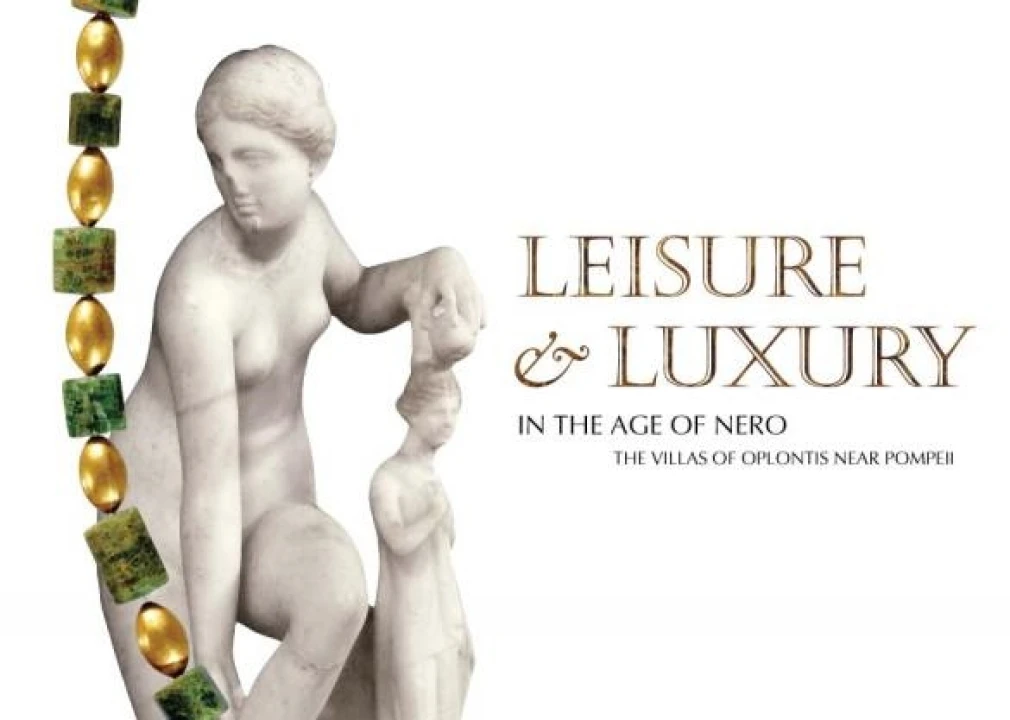The Smith College Museum of Art will host LEISURE & LUXURY IN THE AGE OF NERO: THE VILLAS OF OPLONTIS NEAR POMPEII, February 3 through August 13, 2017. Smith College Museum of Art - 20 Elm St, Northampton, MA
ABOUT THE EXHIBITION
Featuring works seen for the first time outside Italy, this groundbreaking exhibition centers on the ancient town of Oplontis—near Pompeii—situated on the Neapolitan coast. Like Pompeii, Oplontis was buried and preserved when Mount Vesuvius erupted in 79 CE. The exhibition focuses on two adjacent, spectacular Roman archaeological sites—one an enormous luxury villa (“Villa A”) that once sprawled along the coast of the Bay of Naples, the other a nearby commercial-residential complex (“Villa B”), where products from the region were exported.
"This is a singular opportunity for our visitors to experience an amazing array of art and artifacts that tells the story of life 2,000 years ago along the Bay of Naples, before the eruption of Vesuvius. As a teaching
museum, we are excited to be part of the first public exhibition of material that reveals new discoveries about the Roman past," states Jessica Nicoll, Director and Chief Curator of SCMA, and the supervising
curator of this exhibition.
Ongoing excavations of the villas at Oplontis have revealed a wealth of art—including sculpture that adorned the villa’s gardens, handsome jewelry, ornate coins and utilitarian objects such as lamps, utensils and drinking vessels. Seen together these beautifully preserved artifacts demonstrate the disparities of wealth, social class and
consumption in Roman life.
“This exhibition provides visitors with the unique opportunity to experience the sculpture, paintings and household items excavated at Villa A, the largest, most sumptuous Roman villa ever discovered on the
Bay of Naples, destroyed by the eruption of Vesuvius in 79 CE. Poignantly this show also delineates the very human tragedy of 54 individuals—including a young woman in her early 20s, pregnant, and
adorned with a treasure-trove of jewelry—who met their fates at so-called Villa B (a seaside wine emporium) awaiting a rescue ship that never reached them,” offers Barbara Kellum, Professor of Art at
Smith College whose field of scholarly expertise is the visual culture of the ancient Roman world.
This is the first public exhibition to address Oplontis, less well known than the more famous sites of nearby Pompeii and Herculaneum, which were also victims of the Vesuvian eruption. SCMA is the third and final venue for this major exhibition and the only one on the East Coast. The 250pp full-color, soft cover exhibition catalogue will be available through the SCMA Museum Shop. A wide variety of programs will be offered throughout the exhibition; see details here: http://smith.edu/artmuseum/On-View/Upcoming/Leisure-and-Luxury-in-the-Age-of-Nero-The-Villas-of-Oplontis-near-Pompeii/Contents/Programs.
The exhibition is organized and circulated by The University of Michigan Kelsey Museum of Archaeology in cooperation with the Ministero dei Beni e delle Attività Culturali e del Turismo and the Soprintendenza Speciale per i Beni Archeologici di Pompei, Ercolano e Stabia.
LEISURE & LUXURY IN THE AGE OF NERO: THE VILLAS OF OPLONTIS NEAR POMPEII is presented at the Smith College Museum of Art in memory of Isabel Brown Wilson ’53 and has been made possible by generous gifts from Jane Chace Carroll ’53, Louisa Stude Sarofim ’58, Jane M. Timken ’64, and Wallace S. Wilson.
ABOUT SCMA
The Smith College Museum of Art cultivates inquiry and reflection by connecting people to art, ideas and each other. Smith College began collecting original works of art in1879, four years after it enrolled its first class. The first iteration of the museum opened in 1919, and today SCMA’s permanent collection includes more than 25,000 artworks created from antiquity to the present day by artists from around the world. Considered one of the finest at an academic museum in the U.S., the collection includes paintings, sculpture, works on paper (prints, drawings and photographs), as well as videos and new media. Galleries are updated and art works are rotated on a regular basis to feature longtime favorites as well as new acquisitions. The museum is open to the public year-round and hosts a varied schedule of changing exhibitions and related public and academic programs throughout the year.



